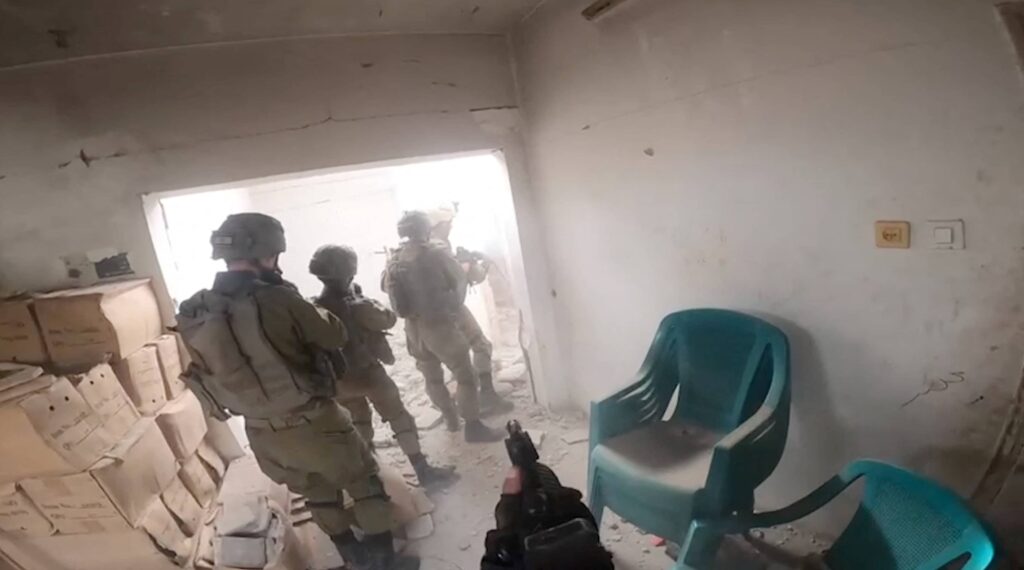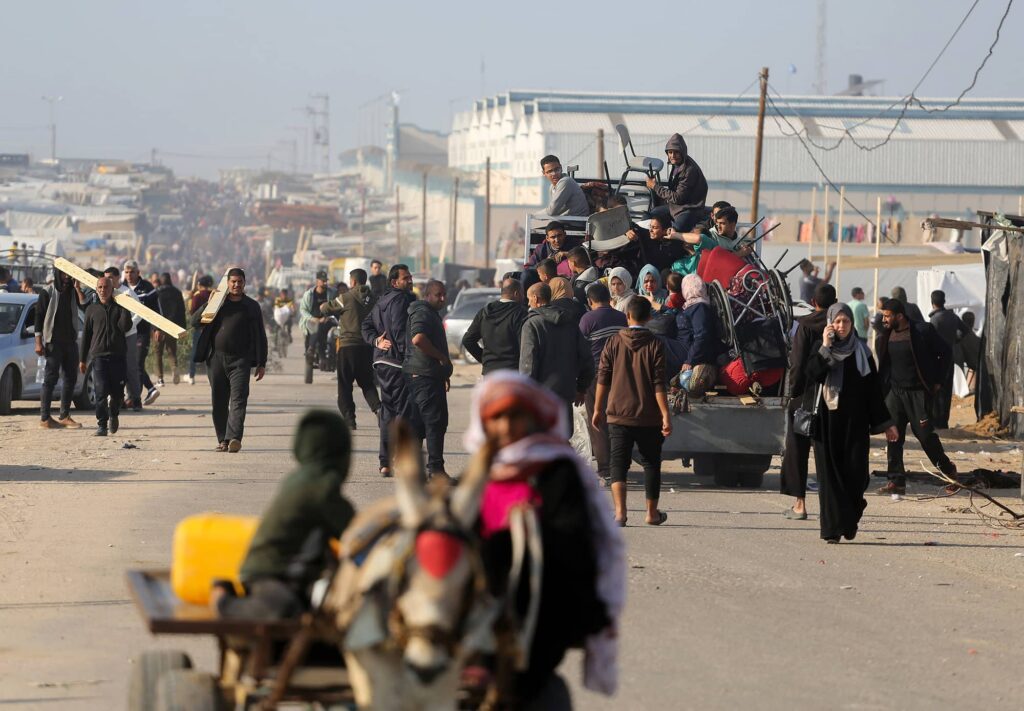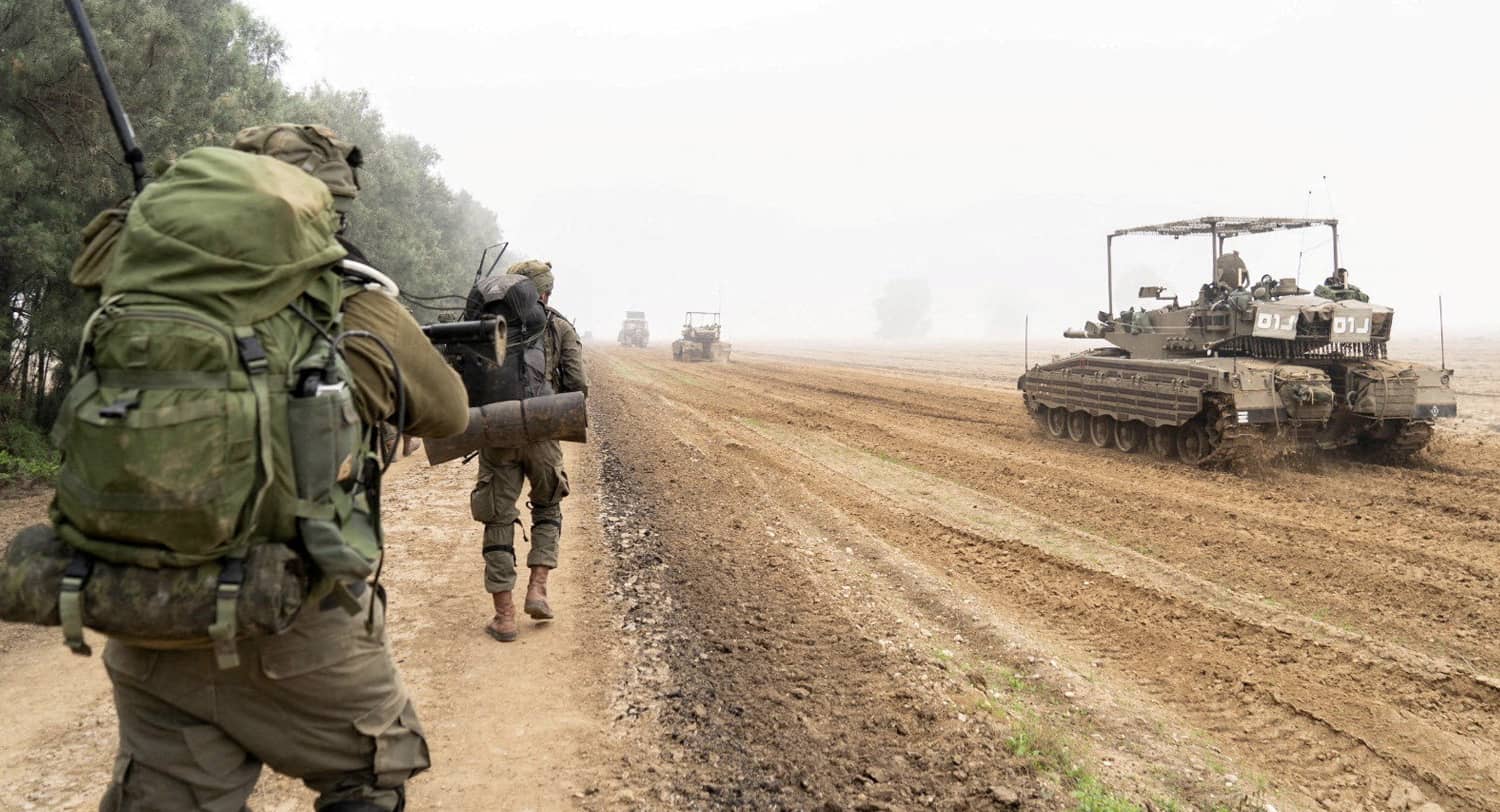Israel used the pause in fighting from November 24 to December 1 to prepare for a new round of operations in Gaza. This became clear as Israeli units began on December 3 to assault Khan Yunis, the major city in southern Gaza.
>> Reports from the Gaza Front: Read more from Seth J. Frantzman
On December 5, the commander of IDF Southern Command, Major General Yaron Finkelman, said that Israel had experienced its most intense day of fighting since the war began. “We are in the heart of Jabalya, in the heart of Shuja’iyya [neighborhoods in the northern Strip], and now also in the heart of Khan Yunis,” he said. “This is the most intense day in terms of terrorists killed, the number of firefights, and the use of firepower from the land and air. We intend to continue to strike and secure our accomplishments.”
His statement is an important bookend to ten days of an emotional roller coaster ride for the Israeli public, from watching hostages released every day to returning to battle in Gaza. The hostage deal between Israel and Hamas was intended to release all the women and children hostages in Gaza. According to the terms of the deal, Hamas would release 50 hostages over four days and then additional 10 hostages for five more days, for a total of 100, and Israel would release 150 prisoners the first four days and thirty more on each additional day.
Hamas took the hostage deal because its leaders wanted breathing space from 50 days of fighting. The IDF had carried out thousands of airstrikes on Hamas after October 7 and Hamas operatives had gone to ground, hiding in tunnels. However, the IDF was able to cut the Gaza Strip in two in late October, with a quick maneuver on the ground that saw the 36th Armored division sprint across the Strip to the sea. This cut off around ten Hamas battalions in Gaza City and in neighborhoods such as Rimal, Shati, Jabalya, Beit Hanoun, and Shujaiya. The IDF then used the 36th Division’s armored brigades and Golani Brigade soldiers as a hammer to push Hamas into Gaza City and its environs, while the 162nd Division and 252nd Reserve Division and others moved into the Strip from the north.
Thus prior to the pause, Hamas was cut off in the north and had lost key areas, such as Shifa hospital, where it had operated. Hamas battalions were decimated, and key commanders eliminated, according to reports from the IDF.

When the pause began on November 24, Hamas got a breather. It also used the hostage releases as a photo opportunity, parading hostages for ever-growing crowds of Gazans each night. The hostages were then moved by the Red Cross to Egypt. The Red Cross vehicles did not have shades to provide privacy for the hostages, so they were subjected to camera flashes and a kind of parade through the streets.
On the last days of the pause Hamas even invited members of Palestinian Islamic Jihad to join in this spectacle, releasing hostages together to show off that the groups are working together. As the pause wore on, Hamas began to try to delay the releases and offer Israel less than the ten agreed-upon number each day. It also refused to release the Bibas family of two children and their mother and father. Hamas obfuscated, claiming the family was held by other groups. Eventually on December 1, Hamas began firing rockets.
Israel returned to war slowly at first. Talks in Doha in Qatar continued to try to revive the pause in operations. However, by Sunday December 3, it was clear this was going nowhere. The head of Mossad returned from the talks, the Prime Minister’s Office said, and Israel began a rapid maneuver toward Khan Yunis.
The Hamas leader in Gaza, Yahya Sinwar, is from Khan Yunis. He may be hiding there, like cartel leader Pablo Escobar hid out in Medellin. What is clear from the first days of renewed fighting is how serious the IDF is in taking the fight to Hamas. Airstrikes have pummeled southern Gaza and in the north the 162nd division is pushing into Jabalya and the 36th is encircling Shujaiya. IDF Chief of Staff Herzi Halevi said on December 5, “60 days after the war began, our forces are now encircling the Khan Yunis area in the southern Gaza Strip.”
The operations between December 1 and 5 will likely result in many of the key areas of the Gaza Strip coming under IDF control. Other areas still remain under Hamas control, such as those around Wadi Gaza in the middle of the Strip and the area in the south along the Egypt-Gaza border. Terrorists have used this area in the past and Israel had to operate here when it controlled Gaza before 2005. In addition, Egypt has had to act against terrorists in Sinai in the past to prevent tunnels from Gaza reaching Sinai.

There are significant complications ahead. Hundreds of thousands of Gazans, acting on Israeli warnings to move south at the start of the conflict, are now in southern Gaza. Countries such as the UAE have a field hospital in Gaza now. Any Israeli move into areas of concern to Egypt, the UAE and Jordan could create more tensions in the region.
Hamas continues to try to use international pressure to get Israel to agree to a ceasefire. From the beginning of the war Hamas was able to leverage support via Iran and through other countries to prevent condemnation of its October 7 attack. These include Russia, China, Qatar and others especially in the global south. Hamas has also used the release of Palestinian security prisoners to showcase itself in the West Bank. Halevi said on December 5 that the IDF has arrested 1,200 Hamas operatives in the West Bank since October 7, which serves to illustrate the extent of Hamas influence there as well.
There are growing concerns with the number of displaced people in Gaza and the large numbers of civilian casualties. IDF spokesperson Daniel Hagari and Chief of Staff Halevi both underlined their efforts to mitigate civilian casualties after fighting was renewed.
Israel also distributed a map to Gazans showing areas of potential combat to help them flee the fighting. The IDF also continues to show how Hamas has used civilian areas to hide its tunnels and weapons. A video of the Nahal Brigade’s discoveries in the Shati area, for instance, shows how Hamas hid weapons in civilian areas.
The issue of civilian casualties will continue to be critical as the IDF is forced to fight in areas in southern Gaza, where most Palestinian civilians are now sheltering as directed by Israel earlier in the conflict. In addition, ongoing concern in the West about Israel’s strategy after Hamas is defeated will continue to overshadow the next phase of operations.
>> Reports from the Gaza Front: Read more from Seth J. Frantzman



